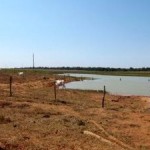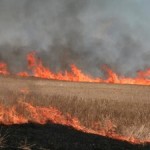As many organizations have found to their cost, however, improved knowledge management does not necessarily lead to learning. To ensure learning, processes are needed for identifying policy-relevant knowledge (as well as knowledge gaps) and for communicating that knowledge and translating it to ensure that it is relevant and useful in different contexts.
The core ideas of support for and bridging between knowledge generation and knowledge use lead to the concept of a learning platform – defined as an integrated set of services that provide information, tools and resources to support policy learning. Learning platforms need both bottom-up tools of inter-organizational network management and the top-down impetus provided by access to key decision-making and coordinating bodies.
Bottom Up
Forest policy learning platforms will be built partly on the basis of a wide variety of existing and future national, regional and global networks. The most useful examples are those organized at appropriate scales around a particular problem. They comprise stakeholders with on-the-ground experience as well as those with professional expertise in the problem to be addressed. Some, such as the Global Partnership on Forest Landscape Restoration, operate successfully at different scales. They survive and prosper by meeting the needs of their members and, to the extent that they are learning networks, by generating, communicating and translating knowledge.
Top Down
Nonetheless, there are a number of reasons why forest policy learning platforms will not be built and coordinated entirely from the bottom up.
First, the theory of inter-organizational networks stresses the importance of trust between network members as a key requirement for participatory or shared network management. Given the history of conflict on forest issues and the parallel development of non-governmental and state-led forest networks, the level of trust among networks will initially be low. Creating the circumstances in which these disparate networks will willingly share knowledge, and trust the knowledge obtained from external sources, will take time. At the outset, leading organizations or specialized network administration organizations will be required.
Second, the policy learning literature emphasizes the critical role of policy entrepreneurs in promoting innovation. Entrepreneurship in this context means not only being alive to the possibilities of new ideas in local contexts, but also identifying opportunities to build trust in the learning platforms and their ability to deliver successful outcomes.
Third, and perhaps most important, if information is to serve a coordination function, such as the organization of monitoring, evaluation and peer review as mutual learning processes, there is a need for overall direction. Even if this direction is in the form of flexible guidelines with ample scope for national and local interpretation, general goals will need to be negotiated and agreed.
Both the ASEAN and European Union experiences suggest the importance of access to the key arenas where decisions are taken and policies are made. What is missing from current efforts is not so much the capacity to generate knowledge as the capacity to communicate it and to translate it into policy. Access to the centres of power will be indispensable.
Institutional Change for Forests+
There are three options for an institution that would serve both as a global-level clearing house for forest-focused and forest-related research and as a learning and a dialog platform to strengthen and coordinate policy learning and consensus building between different stakeholders, including policy makers, practitioners, scientists, and the civil society.
1. Build on an existing institution
One option could be to build on an existing institution. The United Nations Forum on Forests (UNFF) for example has significant existing capacities, a broad and comprehensive mandate, universal membership and a place in the United Nations system as a subsidiary body of ECOSOC. Since its inception, its trajectory has been away from negotiating a top-down, legally binding agreement towards the adoption of a mix of other governance instruments, including the adoption of the Non-Legally Binding Instrument on all Types of Forests. This trajectory could support the development of appropriate instrument mixes and the knowledge on which such mixes could be based. The UNFF’s current focus, as with other subsidiary bodies of ECOSOC, remains on high-level negotiations and resolutions and, while these activities would continue, the emphasis would need to shift. Not only its history but also its rules and procedures may make it difficult for the UNFF to be as inclusive and participatory as required to encourage broad participation and create new learning platforms and scientific advisory mechanisms. Much would need to be changed but the UNFF, with the support of the Collaborative Partnership on Forests (CPF) has potential as a bridging mechanism, not least because it is a firmly forest-focused institution committed to multiple perspectives.
2. A collaboration amongst existing institutions and actors
This option would draw on the diverse resources of a key group of organizations and actors. The Collaborative Partnership on Forests is an example of such an institutional arrangement. The advantage of collaboration is the ability to draw on a more diverse group of actors and institutions that would include collaborative learning organization, as well as those with direct involvement in global forest governance. In the case of collaboration to support coordination by learning, the collaboration would need to include institutions and actors recognized as frontrunners in the development of innovative learning mechanisms beyond the existing membership of the CPF itself. Such a collaboration would need to do more than just open doors to include civil society NGOs as well as traditional international organizations. It will also need to convince NGOs that participation is worth their time and energy. Much can be learned from the experience of the CPF in this respect.
3. Create a new institution
This option would seek to create an entirely new institution that would stand largely or entirely apart from existing processes of high-level negotiation and global forest diplomacy. Its authority would be solely based on its ability to generate knowledge and strengthen engagement, collaboration and learning among diverse stakeholders.














